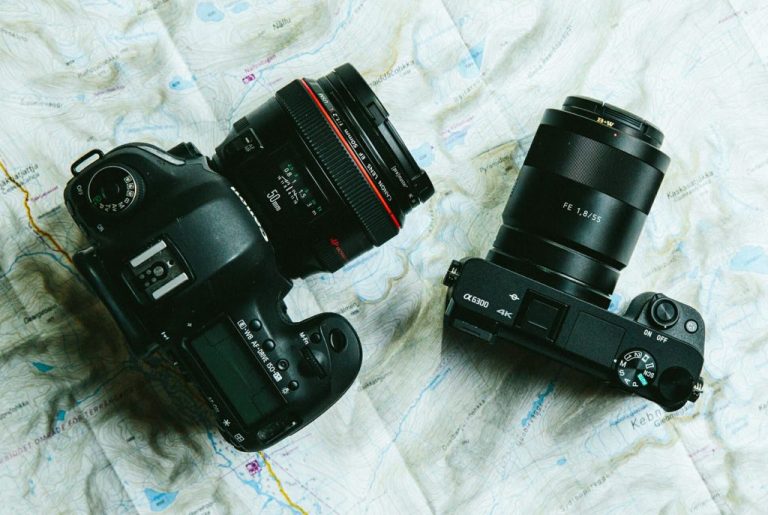How Do Cellular Trail Cameras Work [ Complete Guide in 2023]
In simple words, a cellular trail camera is simply a combination of a trail camera and a cell phone. Cellular trail cameras send you thumbnails of photos with help of cellular transmission.
A Guide On How Do Cellular Trail Cameras Work
How do cellular trail cameras work exactly can not be defined in two lines. Read on further to know about its basic requirements, components, and their mechanism.
1. Motion Detectors
Cellular trail cameras work with the help of motion detectors that are used to record any motion detected in their detection zone. Whenever they sense any unusual activity or an animal, they immediately start recording and taking pictures. They also send notifications to your smartphones.
2. Data Network
For transmitting photos directly to your smartphones, cellular trail cameras need 3G, 4G, or 5G networks. They not only send photos to your smartphones but you can also remotely control them through this connection.
For this purpose, they use special SIM cards that have specially designed data plans for security measures of trail cameras.
3. How The Data Is Being Sent To Smartphones
Cellular trail cameras do not actually directly send data to your phone. They first send data to a cloud-based server or a web portal. If you can download its app then you can view thumbnails that are sent and directly download them to your smartphone, PC, or tablet.
4. Power Supply
Since cellular trial cameras or any other trail cameras are usually installed in woods, therefore powering them from high-quality batteries is your only option.
Cellular cameras especially need more powerful batteries as they continuously have to transmit data to cloud servers.
They either use non-rechargeable batteries (Lithium or Alkaline) or rechargeable AA batteries. Some are even powered by solar panels in order to keep working properly.
Do Cellular Trail Cameras Work Without Service
No, for a cellular trail camera to work and transmit photos, it needs proper service which is compatible with its hardware design. Also, for better results, you must have better service otherwise the cellular trail camera will fail to transmit any image.
Also, it is not necessary that network provider of your smartphone and cellular trail camera are same. For example, if a cellular trail camera is Verizon or AT&T certified product then it must have a respective coverage in order to work.
Do You Have To Pay A Monthly Fee For A Cellular Trail Camera
Before choosing a cellular trail camera, you might have checked its various features like picture quality, quality of PIR sensors, flash, etc. Among these important features, a cellular plan with an affordable and quality data plan is also crucial for it to keep working properly.
If you want your cellular trail camera to keep transmitting data then you must pay a monthly or annual subscription fee. Different companies offer different subscription fees for different cloud storage and services. Usually, every 1000 photos cost around $5 to $10.
You can access your photoes everywhere and at any time easily just by paying a monthly or annual fee.
Frequently Asked Questions
Are Cellular Cameras Worth It?
Absolutely yes. Despite their price range they are actually very useful and worth every penny as they give you the ability to see photos and videos of wildlife in real time.
You don’t have to waste days on a long trek just to retrieve data from trail cameras anymore. Also, they can be used as security cameras which further make them worth it.
What Is The Difference Between Wi-Fi And Cellular Trail Cameras?
Both wifi and cellular trail cameras are used for tracking activities in fields and woods but they are different in how they transmit data.
A WiFi trail camera uses WiFi signals to transmit data. Whereas a cellular trail camera uses cellular networks like 3G, 4G, or 5G in order to upload data to its cloud or server. It is from where users can view and download them on their devices.
How Long Do Batteries Last In Cellular Trail Cameras?
On a single set of batteries, a cellular trail camera can take 20,000 photos. Or to simply put it, a set of batteries on a trail camera will work for 8 to 12 months.
There are certain factors that affect battery life such as shooting videos, trigger delay, night shooting, etc.
Which Cellular Camera Has The Best Battery Life?
Spypoint Solar Dark Trail Camera along with a 110ft detection range delivers the best battery life. It comes with a powerful lithium battery which is further powered by solar panels. This in turn gives never ending battery life so that you don’t have to buy batteries ever again.
How To Hide Your Cellular Trail Camera?
It’s crucial to keep a trail camera well hidden while utilizing one. There are various methods for doing this. Using a decoy camera is one option. Although it mimics a genuine camera, this one doesn’t actually capture any images. While your genuine camera is hidden, poachers will be drawn to the decoy one.
Making up fake rocks, stumps, or leaves is another approach to conceal your camera. A bird’s nest, vines, or branches are more options. To assist them to blend in with their surroundings, the majority of trail cameras are painted with camouflage paint.

![How Do Cellular Trail Cameras Work [ Complete Guide in 2022]](https://cameraslife.com/wp-content/uploads/2022/10/website-image-8.webp)
![Parts Of A Camera And Their Functions [Detailed Guide 2023]](https://cameraslife.com/wp-content/uploads/2022/10/website-image-3-768x402.webp)


![How To Reset Ring Floodlight Camera [Detailed Guide 2023]](https://cameraslife.com/wp-content/uploads/2022/10/website-image-5-1-768x402.webp)

